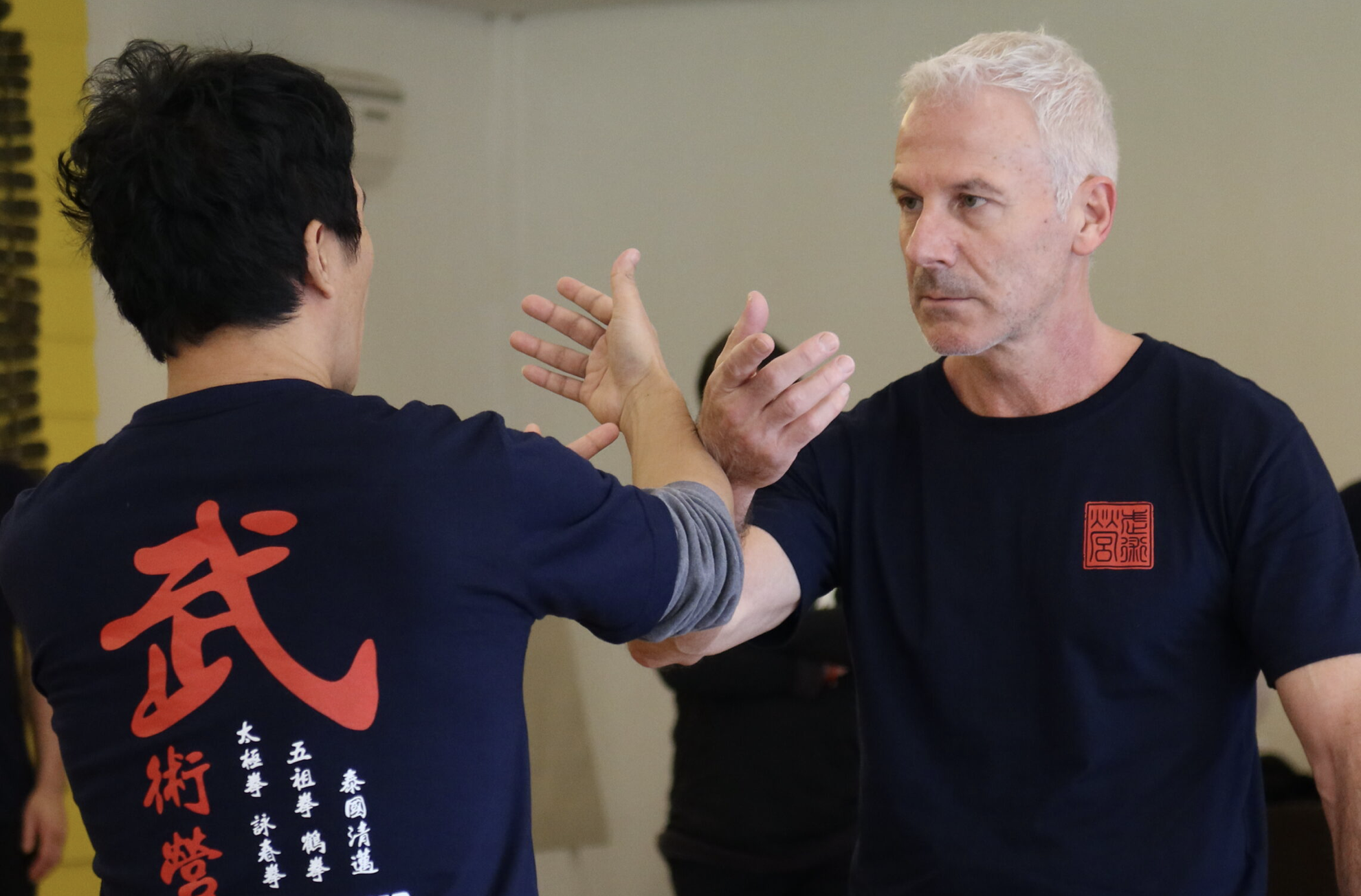Push Hands
Push Hands
Push Hands / Tui Shou, also called feeling hands.

Push Hands is another building block of Taiji. You practise moving in a relaxed, balanced and grounded manner, even when an external force is acting. The force must be felt and understood by the other person so that you can follow/adhere to it without resistance (direction and strength). By returning or redirecting this force, the training partner can be thrown off balance. It is important that no force is used. Tui Shou brings a playful element to Taiji. It also shows whether the principles practised in Taiji lessons have been understood, work and can be implemented.
Push Hands is a training method
Push Hands partner exercises are never about winning or losing, it is never a test of strength. We use intention, not muscle power! We help each other to improve in the art. The basics of this art come from the “Taijiquan Classics”, such as Zahng Yun’s version.
What is Song ?
Song means more than just relaxation (yielding to gravity, sinking powerlessly into oneself). Song, on the other hand, is aimed at sensitivity, increased alertness, flexibility and lightness, coupled with a conscious and economical use of energy. Together with Peng Jin, Song forms the decisive functional basis of all other essential energies of Taijiquan.
Jin, Internal trained force
In the context of Taijiquan, Jin means: an inner strength trained through special stretching exercises. Tendons, ligaments and connective tissue are trained in such a way that they can be utilised in the sense of the Taijiquan martial art; sensitive, connecting, folding and elastic.
Four important skills for push hands
Zhan (stick), Nian (adhere), Lian (join), Sui (follow)
Some Taijiquan principles
Vertical alignment
Gravity, which acts vertically, is a great force that is constantly acting on us as we move. We can use this force to align our body so that we are always in perfect balance.
Distinction between yin and yang
Clear distinction between empty and full, passive and active, closing and opening, sinking and rising, yin and yang.
Balancing movements
Every body movement has an internal and/or external balancing movement.
The 13 basic techniques
8 basic techniques:
Peng
Lu
Ji
An
Cai
Zhou
Lie
Kao
5 directions of motion (wu bu):
Qian Jin
Hou Tui
Zou Gu
You Pan
Zhong Ding
The Six Harmonies (Liu Her – after Dai Long Bang, 1750)
Three external harmonies:
1. the hands are connected to the feet,
2. the shoulders are connected to the hips,
3. the elbows are connected to the knees.
Three internal harmonies:
4. the heart spirit (Xi-Shen) is directly related to the Yi (intention),
5. the Yi with the Qi and
6. the Qi is connected with Jin/Jing (force).
Online Training Chuan Cheng Academy
In addition to the weekly, ongoing lessons, there is also the option of booking online training directly with Master Liang Dehua. In addition to the online course, I offer the opportunity to deepen what you have learnt in workshops and/or private lessons.
Further information
- Chuan Cheng – Taijiquan and Internal Arts Academy
- Form description, Taiji Yang style, 88 form
- Push Hands
- Taiji is fascia training